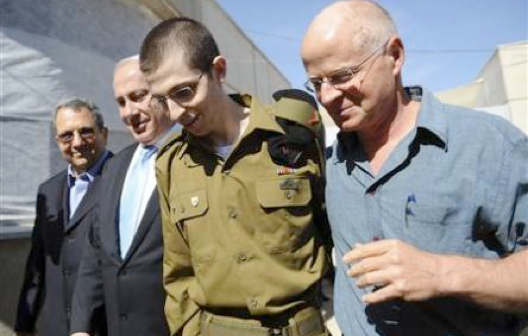Lesley Garrett
Photographer
On Tuesday, October 18, the first of over one thousand Palestinian prisoners were released. This group included multiple criminals serving life sentences. So why would people who had been jailed for life be set free? All in exchange for the release of a young Israeli soldier, Gilad Shalit.
During a 2006 raid on an military outpost in the Gaza Strip, Shalit was captured at the age of 19 by the Hamas in 2006 at the age of 19. Since then, much dispute over his imprisonment and multiple attempts at negotiation for his release have been ineffectual; that is, until Tuesday when Shalit was reunited with his family. "I brought your boy home," Israeli Prime Minister Benjamin Netanyahu told Shalit's parents while awaiting his return to the Israeli Air Force base. Shalit must remain at the base for medical tests and debriefing before he is able to return home.
On Tuesday, the first 477 Palestinians prisoners were released. This included many prominent criminals such as Ahlam Tamimi, Amneh Muna, and Marwan Barghouti. Among the 477 released, some had been convicted of murder and terrorist attempts against Israel. Certainly releasing dangerous criminals is concerning, but violent criminals will be closely monitored and under multiple restrictions to protect the general public. The rest of the prisoners are to be released at a later date, which has yet to be determined.
Conflict between the inhabitants of the West Bank and Gaza Strip, the Palestinians, and the rest of Israel, the Israelis, has been an ongoing occurrence for a long time. In the prisoner exchange agreement, Hamas required Israel to pay a high price for Shalit’s return because Hamas, the governing political party of the Gaza Strip, believes their comrades were ‘political prisoners‘ not participants in war.
Now that valuable people from both sides have been returned to their respective areas, many hope that more compromise is to come. Ronald W. Zweig, Tuab Professor of Israel Studies at New York University, states that “There are . . . considerations which give grounds for optimism. Any movement in the stalled peace process might be enough to get the wheels of this heavy cart out of the rut in which it is trapped,” and “the release of these prisoners removes a major obstacle from any future peace settlement between Israel and the Palestinians.” Time will tell if the two factions in this troubled area of the world may one day see peace, but Shalit’s release might be a beginning.
